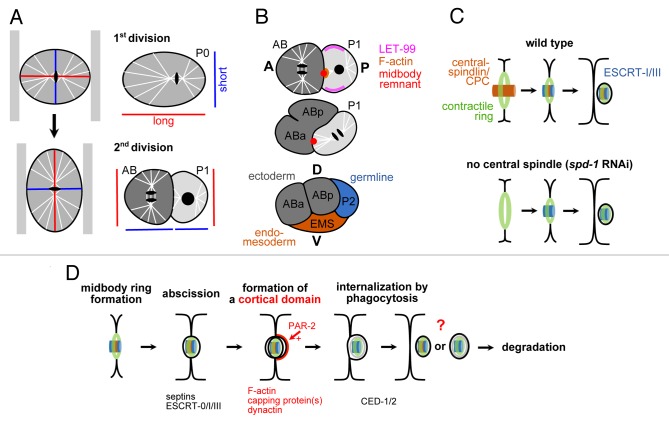Figure 1. A. Hertwig’s rule and its violation during the division of the P1 blastomere in C. elegans. Left: Exerting a compressive force along the long axis of a cell can transform this axis into the short axis and the spindle will re-orient along the new long axis. Right: Long and short cell axes during the first two cleavages in the C. elegans embryo. Note that all cells except P1 obey Hertwig’s rule. B. Function of the midbody remnant during dorsoventral axis formation in C. elegans. See text for details. A = anterior; P = posterior; D = dorsal; V = ventral. C. Midbody remnant internalization does not require the central spindle-derived part of the midbody. Schematic adapted from ref. 27. CPC = chromosomal passenger complex; ESCRT = endosomal sorting complex required for transport. D. Hypothetical scheme for a midbody remnant ‘pathway’ in C. elegans early embryogenesis. Bottom: Protein factors required for the respective step. See text for details.

An official website of the United States government
Here's how you know
Official websites use .gov
A
.gov website belongs to an official
government organization in the United States.
Secure .gov websites use HTTPS
A lock (
) or https:// means you've safely
connected to the .gov website. Share sensitive
information only on official, secure websites.
